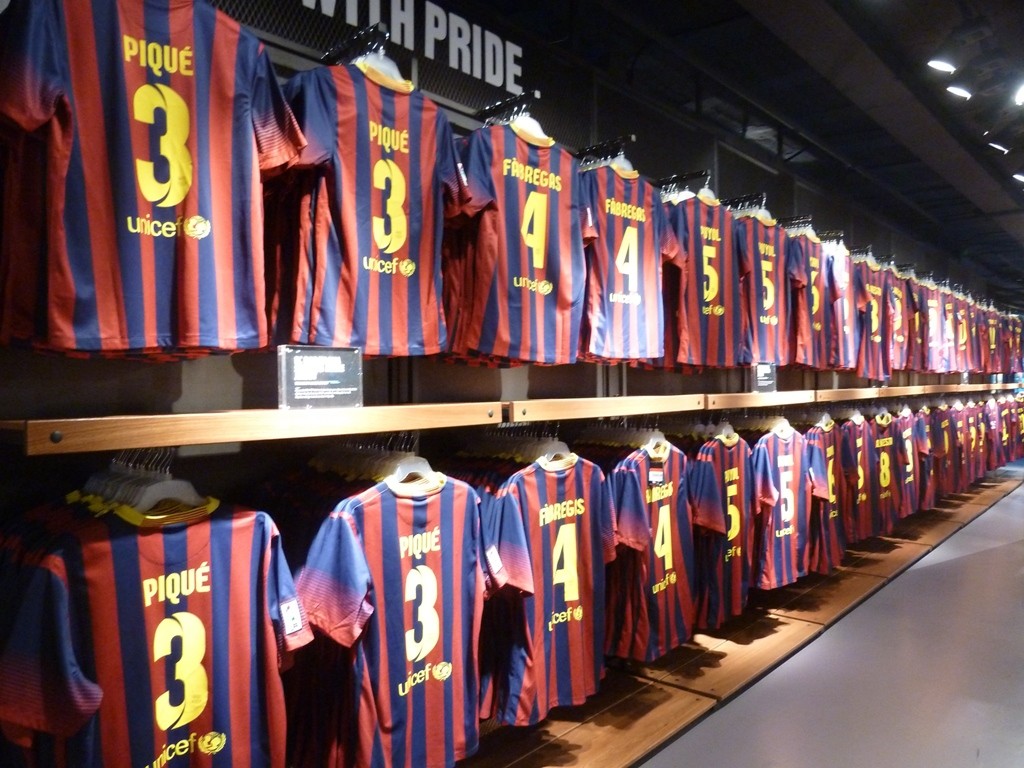The Blaugrana legend
It is a must-see for all the football fans who visit Barcelona. This wonderful stadium, whose name means "New pitch", is actually not that new, as it was built in the 1950s. However, at that time it was called that way to set it apart from the ancient stadium, located in the district of Les Corts. In recent year, then, it was decided to adopt Camp Nou as the official name following a popular vote.
Officially inaugurated in 1957, the stadium was restored several times and is currently the widest stadium in Europe, housing up to 99, 000 people. However, rather than for its capacity, the place is famous for housing the football matches of one of the most famous teams of the world, the Futbol Club Barcelona.

It may seem unbelievable, but the club was not founded neither by a Catalan nor by a Spanish person. It was a Swiss gentleman called Gamper, indeed, that decided to create an association of young football players. Also the players of that original team were quite a mixed bag, including a few Spaniards, three Englishmen, two Swiss people and a German player. The chosen name was the English version ("Football Club Barcelona") of that current one. From that far-away international team, which in a few year turned into one of the most popular clubs of Catalonia and then of Spain, the legend of the great Barça (the most famous surname of the team) was born.
Together with its arch-rival, the Real Madrid, the club is probably the most renowned football team in the world, and doubtlessly one of the most successful ones, boasting an endless series of national and international triumphs in recent years. Although, if the last decade has been a real golden age for the blaugrana (another surname inspired by the Catalan name of the two main colours of the team, red and blue), it has not always been so. The 1920s and the 1930s, for example, were quite dramatic decades for the club: after suffering heavy sanctions imposed by the central government during the dictatorship of Primo de Rivera, the FC Barcelona had to get over the suicide of his founder Gamper, and above all the death of his successor, Josep Sunyol.
Apart from being president of the club, indeed, Sunyol was also a Catalan political man opposing the rebellion of Francisco Franco: for this reason, during the Civil War he was shot by the troops of Franco. Nevertheless, the club managed to recover from this tragic facts and gradually become one of the best teams in Europe, thanks to the deeds of great players like Suarez and Cruyff and coaches like Helenio Herrera and Cruyff himself. Maradona, Stoichkov, Laudrup and Romario were some of the blaugrana stars in the 1990s, leading the team to several triumphs. However, it has been in more recent years that the club has imposed itself as a sort of "Dream Team", featuring players like Ronaldinho, Eto'O and Lionel Messi, who is still the icon of the team.

The above-mentioned historic vicissitudes has made the Futbol Club Barcelona more than a football team (or rather, as a huge sign found on the bleachers of the stadium reminds the visitors, "Mes que un club"). The club is, in the first place, one of the symbols (if not the main one) of the Catalan pride, being regarded as the personification of the national values. Not by chance, the colours of the Catalan flag are found both on the t-shirts and on the emblem of the club. This identification means that the rivalry with the main team of the Spanish capital, the Real Madrid, which we have said to be quite heated, sometimes becomes more than a sport contention.
Anyway, it is interesting to notice how the club, far from being composed only by Catalan football players, boasts a good tradition of Spanish and, above all, international aces of football. One final element deservers to be remarked: until very recent years, the blaugrana were the only one between the top teams in the world who did not bear the brand of any sponsor on their t-shirts, featuring instead the name of Unicef. However, the financial difficulties of recent years have finally forced the club to an historical turning point.

Finally, it is important to point out that, despite the misleading nature of the name, the club is not only a football team, but rather a multisports association featuring also important teams of other disciplines. Basketball, handball, hockey and rugby are only a few of the several sports practiced under the legendary blaugrana colours.
I must admit that I did not visit the stadium, being quite put off by the 23 Euros entrance fee. However, I was assured that it is quite an unforgettable experience, including a tour along the pitch, through the locker rooms and on the bleachers. It is possible, though, to visit the museum at a much lower price (8. 50 Euros): this modern and technological space provide very interesting insights on the history of the team. The best way to reach the Camp Nou, located in a vast area also including the Palau Blaugrana, were the basketball and handball home match of the team are played, is undoubtedly by underground: depending on the line you may find easier to use, you may get there from Palau Reial (L3, 10 minutes walking) or Plaça de Sants (L5, 15 minutes walking).
Galleria foto
Contenuto disponibile in altre lingue
- Français: La légende de Blaugrana
- Español: La leyenda blaugrana
Lascia un commento riguardo questo luogo!
Conosci Camp Nou? Condividi la tua opinione su questo luogo.


















